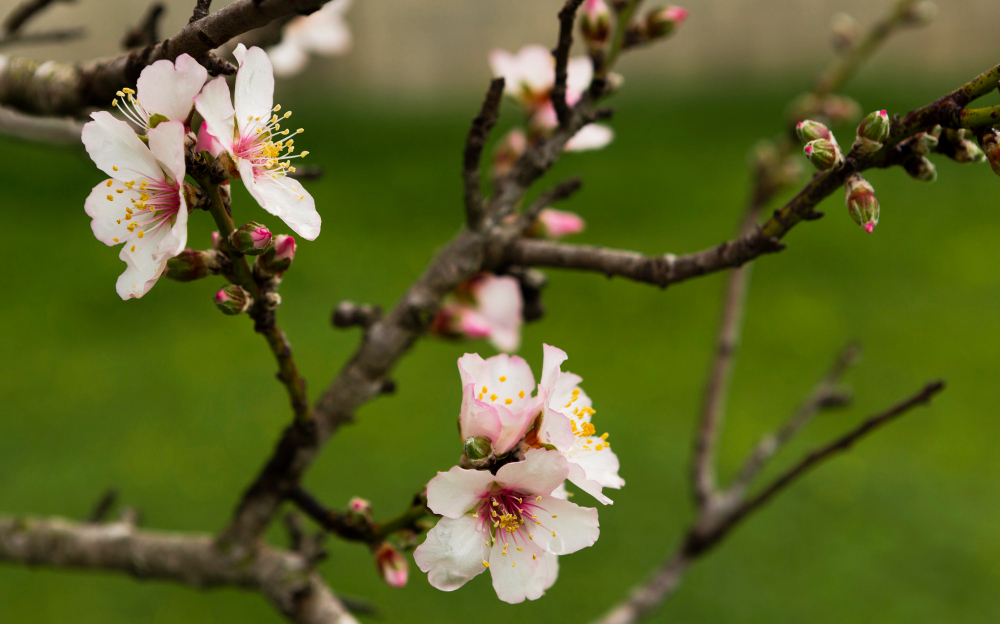Barbarazweig: Why Germans cut a cherry branch on December 4 (Barbaratag)
The patron saint of miners, artillerymen and firemen, Saint Barbara has her feast day on December 4. While Barbara isn’t perhaps the most famous of Catholic saints, her day is the source of a cute Christmas tradition observed by many in the Catholic regions of Germany: the Barbara branch (Barbarazweig).
Who was Saint Barbara?
Although it has never been established whether Barbara was a real person, according to legend she lived in Asia Minor (now modern-day Turkey) sometime around the third and fourth centuries. She is said to have been martyred by her own father after she converted to Christianity.
The story goes that Barbara’s father, Dioscorus, was extremely concerned about his young daughter’s virtue, and so whenever he was away from home, he kept her “safe” by locking her up in a tower that had just two windows.
While locked up in her cell, lonely and unhappy, Barbara is said to have found a dried-up cherry tree branch, which she placed in a vessel of her own drinking water and tended to over the following days. Miraculously, the branch came back to life and sprouted beautiful cherry blossoms.
One day, Dioscorus came home to find that a third window had appeared in the tower. When he asked his daughter why a window had been added, Barbara told him that she had converted to Christianity, and the three windows represented the holy trinity of her new faith. Angry, Dioscorus demanded that she renounce, but Barbara refused, and so he commanded that she be tortured and then executed.
The gruesome legend tells how originally Barbara was due to be burnt at the stake, but the torches to light the pyre kept extinguishing as soon as they came near her. Dioscorus was eventually beheaded his own daughter. However, he was not to emerge from the story victorious, as on his way home he was struck by lightning and killed.
The Barbarazweig
While today this association with fire and thunderstorms means Barbara is the patron saint of firefighters and others who handle explosives, it is the cherry tree branch that has become her most enduring symbol - and with it has created a small Christmas tradition observed in Catholic parts of Germany and Austria.
Traditionally, on St Barbara’s Day on December 4, people go outside and cut a small branch from a flowering tree - this is typically a cherry tree but can also be apple, birch, hazelnut, chestnut, plum, forsythia, lilac, or similar blossoms.
Known as the Barbara branch (Barbarazweig), this small spray is then placed in a vase of water and kept in a warm room for the next few weeks. If the fates align, then the branch should blossom in time for the Christmas holidays, as the warm temperature tricks the buds into thinking it’s already spring.
The belief is that the blossoming of the Barbara branch brings good luck for the coming year. If it blooms precisely on December 25, this is a particularly good omen. One tradition is also for young girls to assign the name of a boy they admire to each of several different branches; the one that blossoms first is the one they will go on to marry.
In some parts of Germany, you might also come across a Barbara tree (Barbarabaum), also known as the Weihnachtsmai. For this, whole branches or larger twigs of fruit trees are hung inside the house and decorated with trinkets, similar to a Christmas tree.
Other traditions marked on St Barbara’s Day in Germany
In mining regions, particularly Saxony, Thuringia, Silesia, Bohemia and also in the Ruhr area, so-called St Barbara’s Lights are lit underground on December 4, as the miners ask the saint for protection from accidents and death. In these regions, you might see parades of miners in traditional uniforms.
And in other areas still, St Barbara served another purpose - that of a gift-bringer, like Nikolaus, the Christkind or the Weihnachtsmann. According to Lisa Maubach from the LVR Institute for Regional Studies and Regional History in Bonn, some families in Cologne, Bonn and the Lower Rhine used to observe St Barbara’s Day as the beginning of the Christmas gift-giving season, similar to the way St Nicholas’ Day is seen nowadays.
On December 4, children were asked to put out their shoes, and overnight Saint Barbara would pass by to leave them a small gift behind. However, this tradition had mostly died out by the 1970s, and nowadays Nikolaus, the Christkind and the Weihnachtsmann take centre stage in Christmas celebrations in Germany.
St Barbara’s Day 2023
St Barbara’s feast day is always held on December 4. In 2023, it falls on a Monday. It is not observed as a public holiday in Germany.
Happy Barbaratag!
Whether you’re bringing a budding branch inside, lighting a Barbara candle, or reviving a long-forgotten German Christmas tradition by putting out a shoe for Saint Barbara, we wish you a very happy start to the Christmas season!

